We begin the identification feature by providing tips for identifying their shells. In time to come other molluscs will begin to be featured. But for now its just the two classes that are featured here, namely Class Gastropoda and Class Bivalvia.
The following illustrations would help you understand the parts of a gastropod shell.
PARTS OF A UNIVALVE SHELL
And given below are some illustrations to help understand the parts of a Bivalve shell.
PARTS OF A BIVALVE SHELL
PARTS OF A BIVALVE SHELL
PARTS OF A BIVALVE SHELL
PARTS OF A BIVALVE SHELL
Glossary
To assist in identification and in understanding molluscan features.
Anterior canal: An open or closed tubular shell extension at the anterior end of a shell, through which the siphon is extended. Same as siphonal canal
Apex : The tip of the spire.
Apical whorls : The whorls seen near the apex of the shell ( excludes the whorls of the body)
Body whorl : The whorl seen on the body of a gastropod shell, (starting from the shoulder and terminating in the aperture.- see figure)
Bottom : In a gastropod shell, this describes the anterior end
Calcareous: Made of calcium carbonate.
Callus: Thickened Calcareous part of the aperture near the inner lip.
Columella : A central column surrounding the axis of the shell. It is formed by the inner surface of the whorls. In terms of position it is the wall opposite the outer aperture lip.
Crenulate : A term to describe the presence of notched or scalloped edge
Coronate : Condition when there are tubercules or nodules around the shoulders of the whorls
Denticle : A small tooth-like projection.
Dextral : Clockwise coiling of the shell (when seen from the apex of the shell)
Dorsum : The back of the shell or scientifically speaking the dorsal surface of a shell.
Fasciole : A raised spiral band near the anterior or siphonal canal.
Fold: A prominent constriction or foldings of the shell surface.
Fusiform : Spindle shaped; swollen at the centre and tapering almost equally towards the ends like the shape of a Radish.
Hinge : Of six basic types this is a collective term for structures on the dorsal region in a bivalve which function during opening and closing of valves. They also bear the tooth-like structures.( One of the keys to classify the bivalves)
Hinge teeth : Serve to hold valves in position when closed.
Inner lip : The inner wall of the aperture closest to the axis of a gastropod shell.
Lamella : An erect thin plate (referred to also as scale)
Ligament : Elastic structure that joins the two valves of the shell and acts like a spring while opening and closing of the two valves.
Lunule : The depression seen dorsal to the umbo in bivalves
Mantle : A thin fold of integument ( or skin) which covers the body mass of molluscs.
Nacreous : Describes a condition when a layer of mother-of-pearl .is seen
Operculum : A round or oval structure on the posterior end of the foot that closes the shell aperture when the animal withdraws into the shell. It can be corneous or calcareous, frequently seen in the gastropods.
Outer lip : The lip of the aperture of a gastropod shell away from the shell axis ( the periphery of the shell). The outer lip itself has inner and outer surfaces in some of the molluscs.
Pallial sinus : The scar/mark on the inner side of a bivalve shell running from the anterior to posterior abductor muscle. If the scar is continuous then it is referred to as pallial line and if not continuous then it forms a pallial sinus.( see figure)The mark indicates the line of the attachment of the marginal muscles of mantle.
Periostracum : Thin, horny outermost layer of the shell. It can be transparent or thick, fibrous or hairy.
Posterior : The tail end of the animal; in a gastropod shell it is towards the apex. The posterior canal is located here.
Posterior canal : also called posterior outlet or anal canal (see figure)
Protoconch : Embryonic shell forming the tip of the gastropod shell.
Punctate : Describes a condition where the shell is minutely pitted.
Rib : Describes the design on the shell when the sculpted markings are raised above the surrounding surface. Noticeable in arc shells.
Shoulder : The sharp angular region of the whorl of a shell – part of the body whorl
Siphonal canal : Ref. Anterior canal.
Spire : All whorls of a spiral shell except the body whorl.
Striae : Grooves seen on the surface of the shell
Suture : A groove ( a spiral line) at the junction of a whorl
Umbilicus : Central cavity or hollow around the axis of a gastropod shell. During shell formation the layers coil around this axis.
Umbo : Beak of a bivalve shell, from where generally the growth of the shell would have started.
Valve : Each shell of the bivalve mollusc.
Varix (varices – plural): Thickened ridges seen at the edge of the outer lip of shell. Varices show different patterns.
Whorl : One complete ( 360° ) coil of a shell
The Gastropoda and Bivalvia are further divided into sub-class, order and families. Given below are the descriptions of the families of those shells that have been shown in the Image Gallery

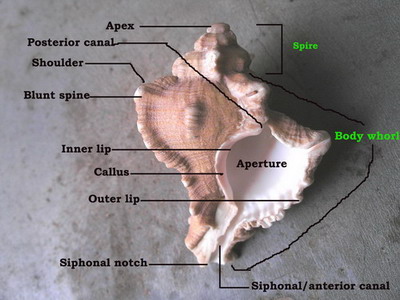
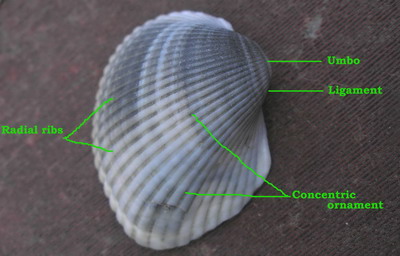
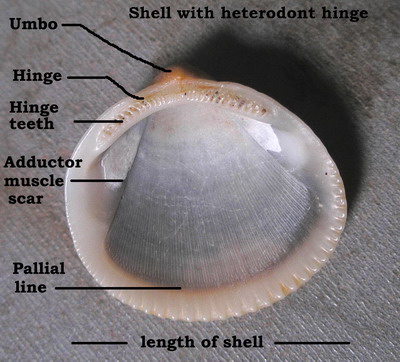
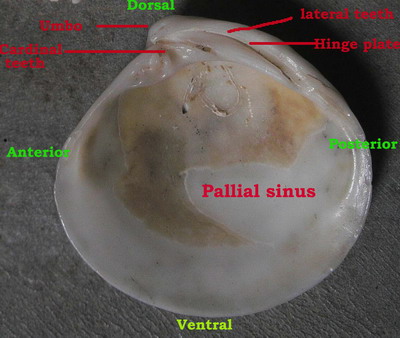
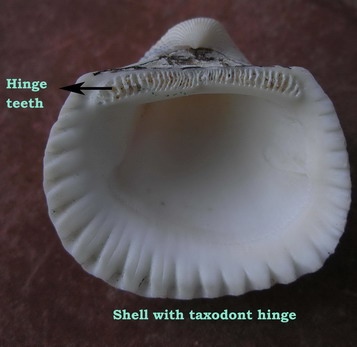
Leave a Reply